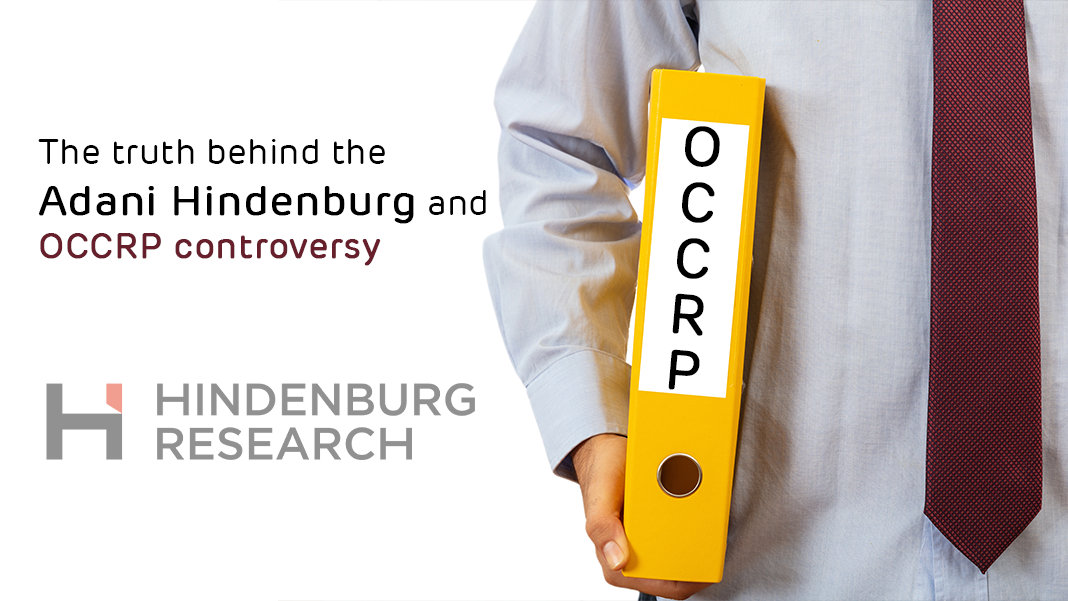A fresh political and economic storm has broken out in India due to the most recent report by the Organised Crime and Corruption Reporting Project (OCCRP) against the Adani Group.
The Adani Group has refuted the most recent allegations in the Hindenburg report Adani controversy. Hindenburg made fresh accusations in January of this year, which the business has dismissed as essentially a “rehash of those allegations.” The group claimed that the study was simply a continuation of a coordinated effort by Soros-funded groups, assisted by a segment of the international media, to renew the pointless Hindenburg report.
However, most of these assertions are unfounded or overstated, and they do not accurately portray Adani’s operations and results. Here are a few details demonstrating why Adani is a respectable business that successfully advances India’s growth and development.
The majority of Adani’s holdings are in industries with strict regulations, regulatory industries determine guaranteed income
The State Electricity Regulatory Commissions (SERCs), the Central Electricity Regulatory Commission (CERC), the Airports Authority of India (AAI), the Ministry of Environment, Forest and Climate Change (MoEFCC), and the Securities and Exchange Board of India (SEBI) are just a few of the organizations that have strict regulations and oversight over the industries in which Adani operates. These authorities establish the tariffs and earnings. Adani may derive from its assets and ensure that it complies with all applicable laws and regulations.
For instance, the SEBI oversees listed businesses’ compliance, whereas AAI sets the aeronautical rates for airports, and CERC decides the power generation and transmission price. Adani is, therefore, unable to deceive or exaggerate its profits from these industries. This means that the whole purpose of the Hindenburg report Adani is to harm Adani’s reputation. In addition, there is judicial oversight by the High Courts and the Supreme Court of India. Adani has perhaps experienced the most court scrutiny of any Group.
However, Adani has prevailed in every court dispute. In every instance, the courts have granted Adani the benefit of the doubt.
Manufacturing and infrastructure industries will continue to thrive as a result of the government’s significant capital investment in infrastructure development
The Indian government has been making significant investments in infrastructure, particularly in sectors like transportation, urban planning, renewable energy, and industrial corridors. These programs allow private parties like Adani to participate in constructing and managing infrastructure facilities, including solar parks, roads, metro rail, airports, and special economic zones. These resources help Adani provide consistent, long-term financial flows while fostering the expansion of other industries, including manufacturing, commerce, and services.
Most of the Adani firms are listed, and all their documents are available to the public. Any assertion of secrets concealed is illogical
Adani Enterprises Ltd., Adani Ports and Special Economic Zone Ltd., Adani Power Ltd., Adani Transmission Ltd., Adani Green Energy Ltd., Adani Total Gas Ltd., and Adani Wilmar are the seven listed firms of the Adani Group on the Indian stock markets. These businesses are expected to publish their financial statements, annual reports, shareholding patterns, corporate governance practices, and other relevant information to the public. Independent auditors, authorities, rating services, and analysts all confirm the accuracy of these statements.
Therefore, any claim made in the Hindenburg report Adani that any information was withheld or falsified is unfounded and easily debunked by consulting public documents.
Banks in India today only extend credit after stress testing a promoter’s proposition. Making the Adani debt questionable is unsustainable
At the end of FY23, the Adani Group had a total debt of roughly Rs 2.27 lakh crore, equivalent to that of other significant Indian conglomerates. According to the debt breakdown, 39% comprises bonds, international banks finance 29%, and PSUs, private banks, and NBFCs fund the remaining 32%. Adani, however, has maintained a solid debt-to-equity ratio of roughly 1.5. It shows its capacity to fulfil its debt commitments, unlike other firms that have experienced financial difficulties in recent years.
Adani has also broadened its range of financial options by raising money on both domestic and international markets by issuing bonds, loans, stocks, and monetizing assets. Adani has received investment-grade ratings from renowned rating agencies, including Moody’s, S&P, and Fitch, demonstrating its creditworthiness and financial stability. Its lender base has increased from 18 to 25, including 2 American banks, 3 European banks, and 3 Japanese lenders, due to the Hindenburg report Adani issue.





